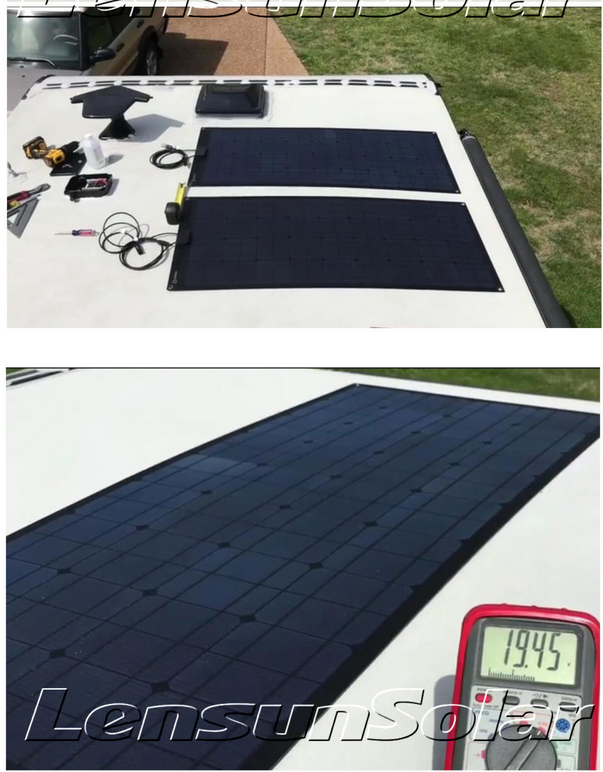You Should Know Before Installing Flexible Solar Panels, A Number of Important Considerations
Flexible solar panels became popular with RV owners and boat owners as they represented a innovative solution, where weight reduction played an important role.
Flexible solar panels are easier to install than standard silicon-based solar panels due to their lightweight nature. With a weight difference of about 20 lbs per panel, easy installation without holes in the roof.
Their popularity rose when several Youtube videos showed them improperly used by bending the panels at extreme angles, both inward as outward. It made for good watching, but in the end was bad for business.
The extreme bending led to broken contacts and premature failing of these panels. It doesn’t necessarily stop working right away, but it will degrade with some time, maybe few months or one year!
Thinner flexible solar panels are more flexible and not as rigid as older module models, which makes installation a delicate process.
There are a number of important consideration when installing flexible solar panels.
- Installing the flexible Solar Panel to a hard surface.
The support structure that the panel will be installed on, must be capable of full support, without deformation, in any weather condition, like wind, snow and, for marine applications, salt and storms.
The support structure should not be subjected to excessive bending and flexing. Excessive and repetitive flexing or bending of the support structure may cause irreversible damage to the panel components, reducing the efficiency and possibly causing internal structural damage.
2. Bending
Creating a slight curve, that conforms to the roof of your vehicle, is a major advantage of flexible panels.
But Only bend backwards, Not bend inward, Only bend if necessary!
Lensun flexible Solar Panels must not be bent to a chord height greater than 20% of the chord length. The depth of bend must not exceed 20% of the length of the panel.
3. Hand-to-hand transport can affect a module, especially if installers are carrying modules on top of their hardhats. That flexing and bouncing up and down can take a real toll and lead to microcracks in the cells. Same with dropping a module and the biggest no-no—standing or walking on top of solar modules.
4. The standard procedure has always been to use bolts & nuts AND holes, to attach solar panels to the roof. If the roof surface allows for it, a better way might be to use a 3M VHB tape or Sikaflex glue.
5. Avoid electrical risks during the installation, connection, utilization and maintenance. A Solar Panel produces continuous current when exposed to sunlight or other light sources. During the panel installation or connection, it’s highly recommended to completely cover the front part of the panel with a soft, light-inhibiting material to avoid electricity production.
6. The panel must stay in his original packaging until the moment of installation. Never touch terminals when the panel is exposed to light or during the installation. Use insulating gloves to avoid contact with the terminals. As a further precaution, use only properly isolated tools.
7. Do not subject the panel to damage by unnecessarily rough treatment, or by dropping objects on it.
8. Use the panel only for it's intended purpose. Follow all the manufacturers instructions. Do not disassemble or remove any part or label installed by the manufacturer. Do not put any paint or labels on the panel.
9. Never focus sunlight on the panel.
If you have any reviews or advice about Lensun Flexible solar panels, Please contact us or call us in the following information from Mondays to Fridays.
Contact information
www.lensunsolar.com
Tel: US +1 720-608-1288
China: +86 15759769602
Whatsapp: +86 15759769602
Skype: lensunsolar
Email: info@lensunsolar.com, lensunsolar@gmail.com





